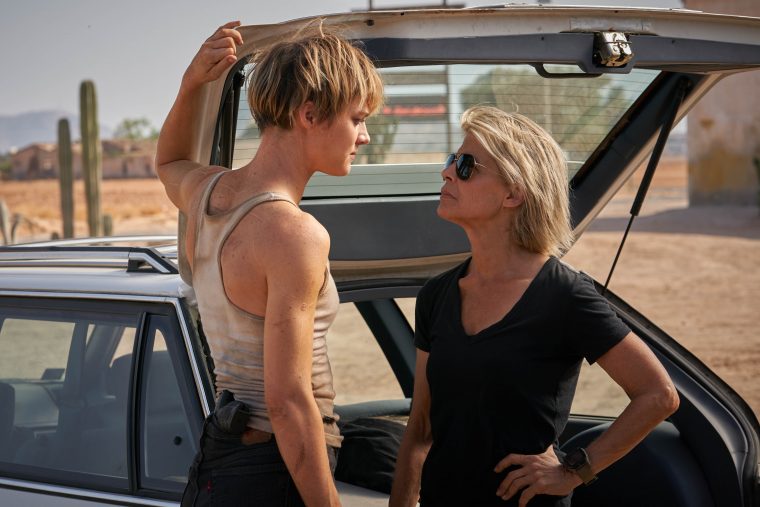
For the last decade I vowed I would never get excited about a Terminator movie again. But when the trailers started dropping for Terminator: Dark Fate I felt something bubbling up. Dare I call it excitement? Director Tim Miller does something wonderful with Dark Fate in that he caters to fans who have followed the series since 1984 with the return of Sarah Connor herself (Linda Hamilton) and Arnold Schwarzenegger’s robot with a heart of gold. But he simultaneously injects the franchise with new blood, anchored by characters of color.
Natalia Reyes’ Dani Ramos is cut from the Sarah Connor cloth to the point that Hamilton has to say “I was her.” The distinction lies in Dani’s unspoken history. She works with her brother in a factory and wants a better life, but that requires putting up with what they’re given. This new fate is meant to give her a purpose, but she resists. She doesn’t want to be used as any type of chip, a pawn in anyone’s game. The script certainly wants us to see the future is female, but it also wants to remind us that the future is made of minorities. Gabriel Luna’s new take on the Terminator is interesting in that he doesn’t imitate or draw upon the previous iterations. He plays the character as knowing he’s not human and only have the barest notion of passing.
I worried that the movie would utilize Mexico’s issues as an attempt to be woke or in the know, and there are certainly valid criticisms. The references to Border Patrol, border crossings, detention centers, even the use of the word “detainee” (which plays like a laugh line because of how the U.S. agent thinks its better than “prisoner”) is a pointed call to arms. Yes, white women still anchor this movie, but the more interesting story is emphasizing how Dani and the new Terminator are playing out a grander game for supremacy that’s more compelling than anything the white characters can conjure up.






